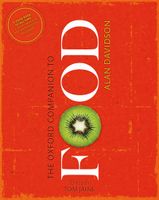🍜 Check out our Noodle bookshelf, and save 25% on ckbk Premium Membership 🍜
Milk Cap
Published 2014
L. deliciosus, which is common in autumn in coniferous woods in Europe and the northern parts of N. America, and also occurs in China, Australia, and S. Africa, is the saffron or orange milk cap. Its cap is up to 15 cm (5") wide, convex at the edges but depressed in the middle. It is of a pinkish saffron colour, sometimes marked with concentric rings of pale green. The rest of the fungus is also saffron, and when cut it exudes a milk which quickly turns to orange. (It later turns green but this is no cause for alarm. Nor is the fact that eating saffron milk caps results in reddish urine.) The somewhat bitter, spicy taste may or may not be liked. Jaccottet (1973) comments that in the opinion of many connoisseurs there is nothing delicious about it except its specific name. This paradox has been explained on the basis that the great Swedish botanist Linnaeus, who bestowed the scientific name, was for once confused and attributed to the saffron milk cap the superior culinary merit of one of its relations, probably L. sanguifluus.
Part of
Advertisement
Related Recipes
-
-
-
-
Related Reference
-
-
-
-
Advertisement



